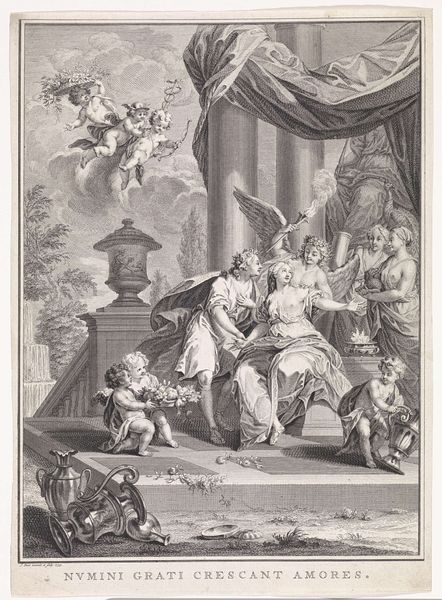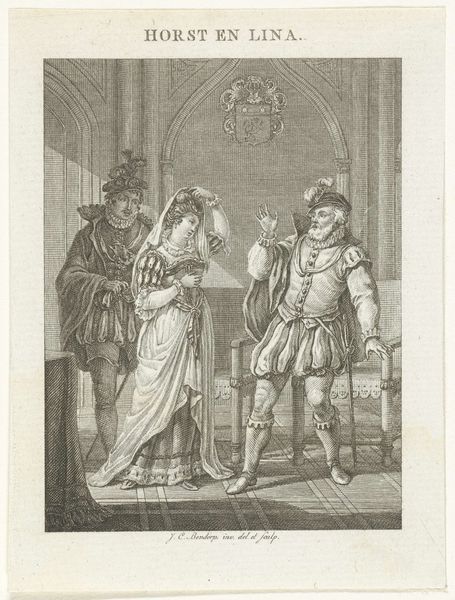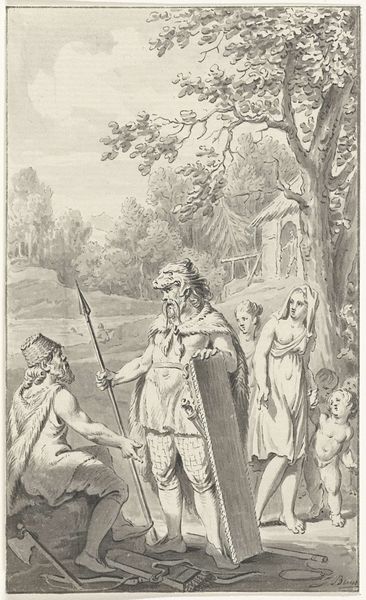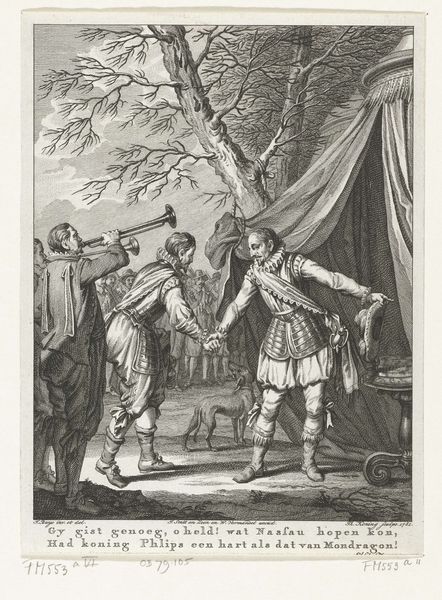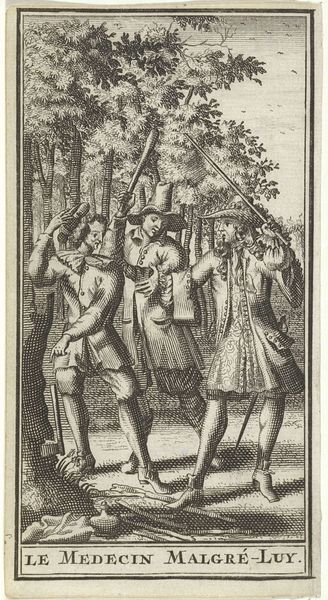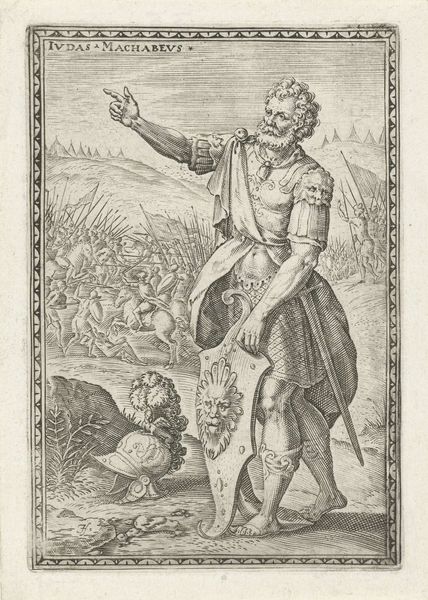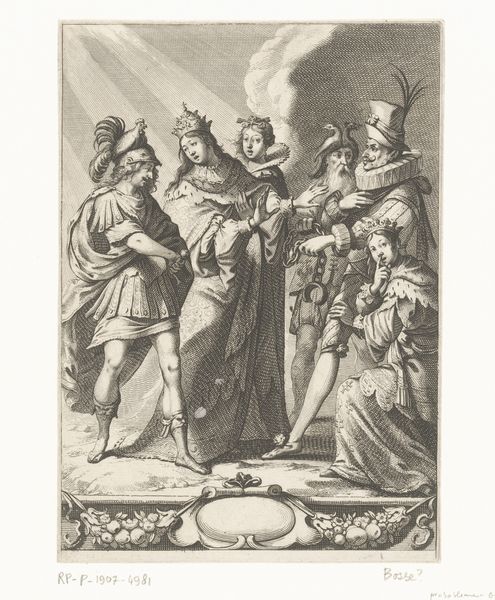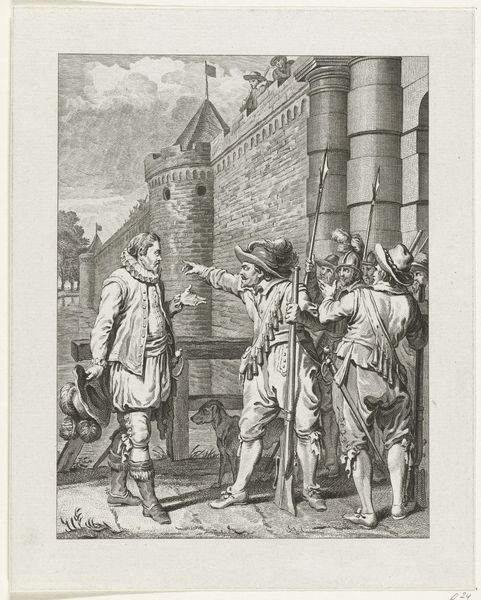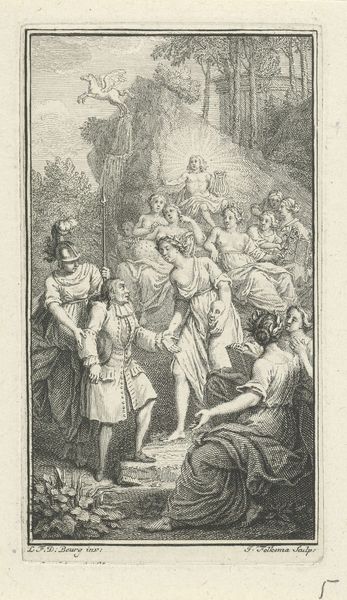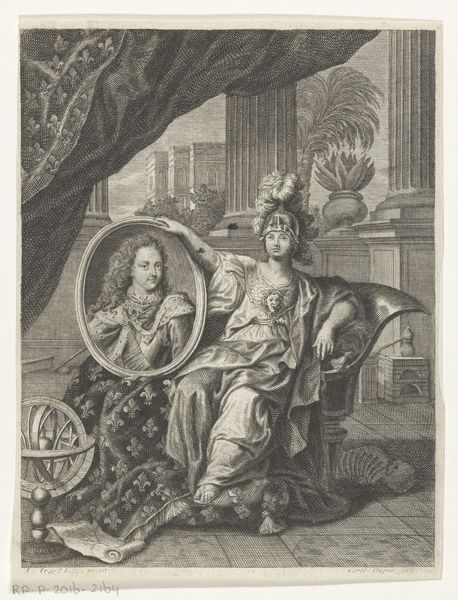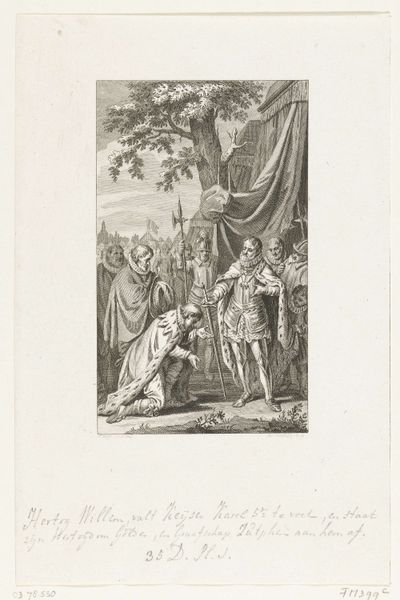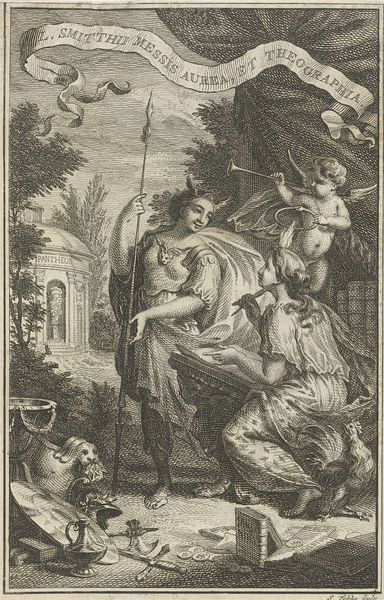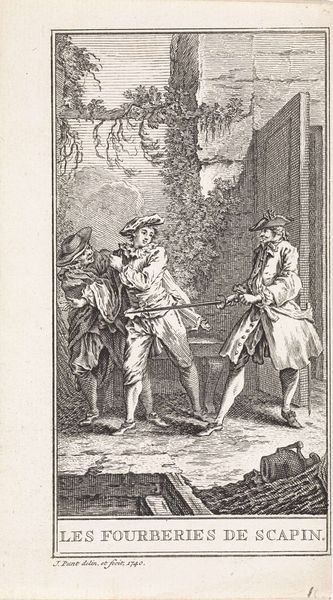
Allegorische afbeelding van Willem van Oranje als verdediger van de Nederlanden 1789
0:00
0:00
theodoorkoning
Rijksmuseum
Dimensions: height 163 mm, width 94 mm
Copyright: Rijks Museum: Open Domain
Curator: Editor: This is "Allegorische afbeelding van Willem van Oranje als verdediger van de Nederlanden" from 1789, by Theodoor Koning. It's an engraving, so a print. It feels quite staged, very deliberate in its composition. What can you tell me about this piece? Curator: Look closely at the tools used. Engraving necessitates a precise, repetitive labor. The sharp lines, the gradations of tone—these are not accidental. How does that process of meticulous reproduction relate to the message the artist is conveying? Is it about precision, control, a singular "truth" regarding Willem's role? Editor: Interesting. It almost feels mass-produced even though, technically, it isn’t. So, is it challenging the idea of the unique artwork by being a print, something inherently reproducible? Curator: Exactly. Consider also the social context. Prints were accessible to a wider audience than paintings. The very medium democratizes the image, allowing for a wider dissemination of this allegorical portrayal of William. What kind of statement do you think the artist is trying to make? Does that impact how we view "high" versus "low" art? Editor: So, it's not just about the image itself, but also about *how* it was made and who it was for. The choice of printmaking implies an intention to circulate these ideas of heroism more broadly within society. Curator: Precisely. The labor and materials – the metal plate, the ink, the press, the act of reproducing it over and over again - that’s where the true message lies in relation to the broader political moment. The material embodies the intention. Editor: That's really given me a new way to think about prints and engravings. I had previously considered that prints are ‘less than’ original art work, and focusing on its materiality and dissemination opens so many avenues to examine its value and reception in society. Curator: Indeed. Always look closely at how art is *made* as that affects its message, and always consider art’s role in the bigger, societal picture.
Comments
No comments
Be the first to comment and join the conversation on the ultimate creative platform.
